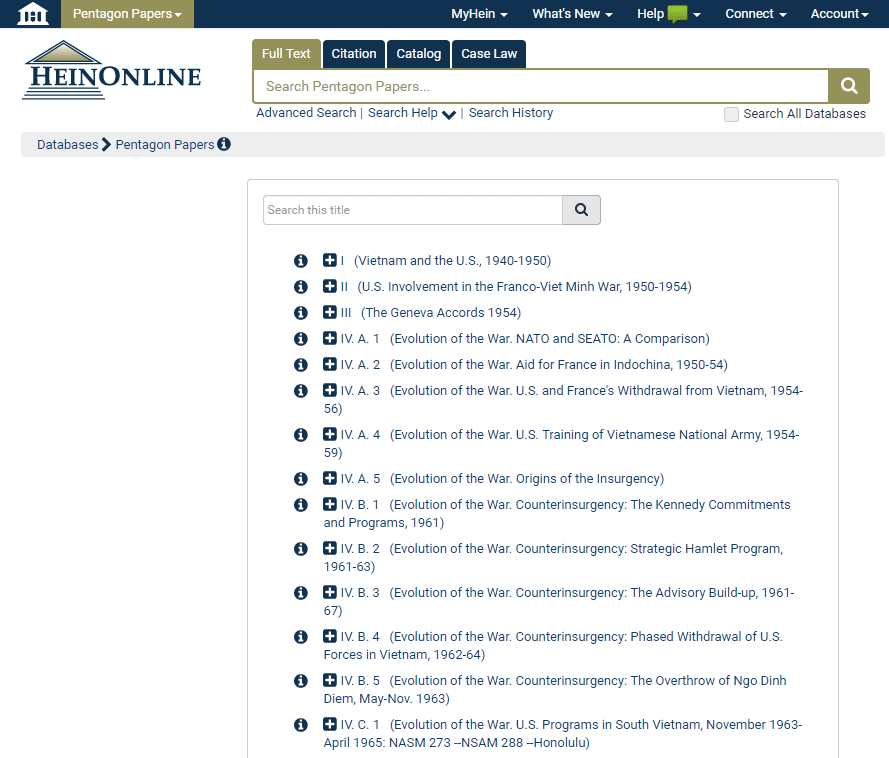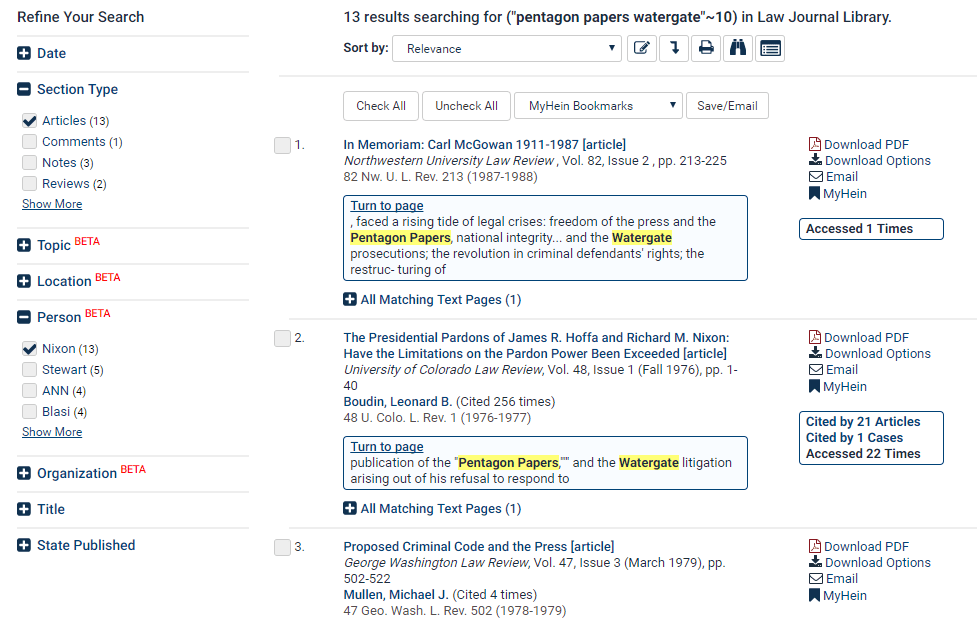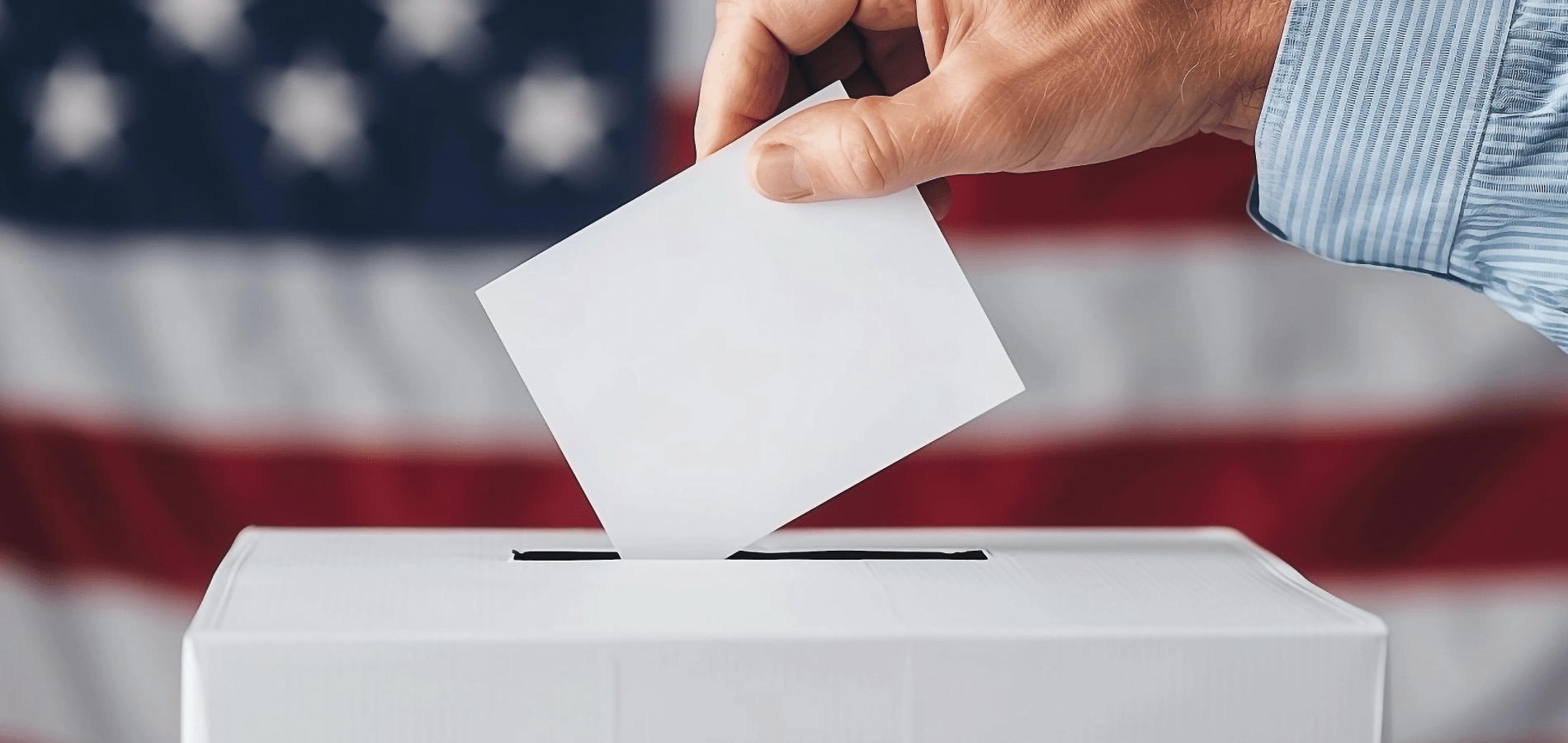Earlier this summer we blogged about HeinOnline’s journal and government document coverage, and how it relates to researching historical events. The blog provided a brief synopsis of the Watergate Scandal and how to research this topic in multiple HeinOnline databases. Let’s now look at the link between the Watergate scandal and the Pentagon Papers, which are available in HeinOnline.

History of the Pentagon Papers
The Pentagon Papers, officially titled United States-Vietnam Relations, 1945-1967: A Study Prepared by the Department of Defense, were first released on the front page of the New York Times in 1971. These papers were released by Daniel Ellsberg, an American activist and former U.S. military analyst.
The Pentagon Papers consist of 47 volumes, approximately 4,000 pages of government documents, and 3,000 pages of analysis on policy decisions concerning the U.S. government’s involvement in Vietnam. The papers revealed that the presidential administrations of Harry S. Truman, Dwight D. Eisenhower, John F. Kennedy and Lyndon B. Johnson had misinformed the public of the degree of U.S. involvement in the Vietnam War. Therefore, the papers had a monumental effect on the relationship between the U.S. government and the American people.
Although the Pentagon Papers did not directly name President Richard M. Nixon, they did discredit his administration. Since Nixon was up for reelection in 1972, he chose to oppose the publication. Attorney General John M. Mitchell and President Nixon forced the New York Times to cease publication with a federal court injunction. The newspaper’s appeal sparked the case of New York Times. Co. v. United States. Within fifteen days, the newspaper was free to publish further documents from the Pentagon Papers due to burden of proof.
Watergate and the Pentagon Papers
President Nixon and his administration argued that Daniel Ellsberg was guilty of a felony under the Espionage Act of 1917. Ellsberg was indicted on charges of stealing and holding secret documents. However, on May 11, 1973, Federal District Judge William Matthew Byrne, Jr. declared a mistrial due to government misconduct. It was revealed that in order to discredit Ellsberg, Nixon composed a special investigative unit, informally referred to as the “White House Plumbers” who illegally broke into Ellsberg’s psychiatrist’s office and attempted to steal files. These so called “plumbers” were also alleged to be the same men who broke into the Democratic National Committee headquarters, part of the Watergate Scandal.
When Nixon refused to turn over the presidential tape recordings to the Senate Watergate committee or the special prosecutor, the House Judiciary Committee passed the first of three articles of impeachment, charging Nixon with obstruction of justice. A few weeks later, Richard Nixon became the first U.S. president to resign.
Researching in HeinOnline
To locate articles on this topic, use the Full Text tab in the Law Journal Library. Type “pentagon papers watergate”~10 into the search bar. This proximity search will find the words Pentagon, Papers, and Watergate within 10 words of each other.

Use the facets on the left to narrow down your results. For this example, choose Articles under Section Type and Nixon under Person. Learn more about these new topic and entity facets from this recent blog post.

To research more on Richard Nixon and the impeachment process, view the sub-collection Impeachment in the United States found in the U.S. Presidential Library.

For help researching this or any topic, or navigating in HeinOnline, contact our dedicated support team at (800) 277-6995, email us, or chat with us!



